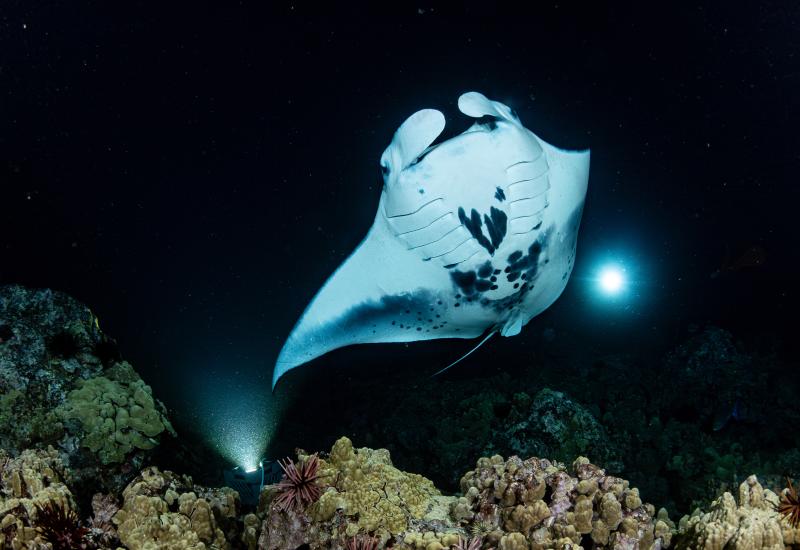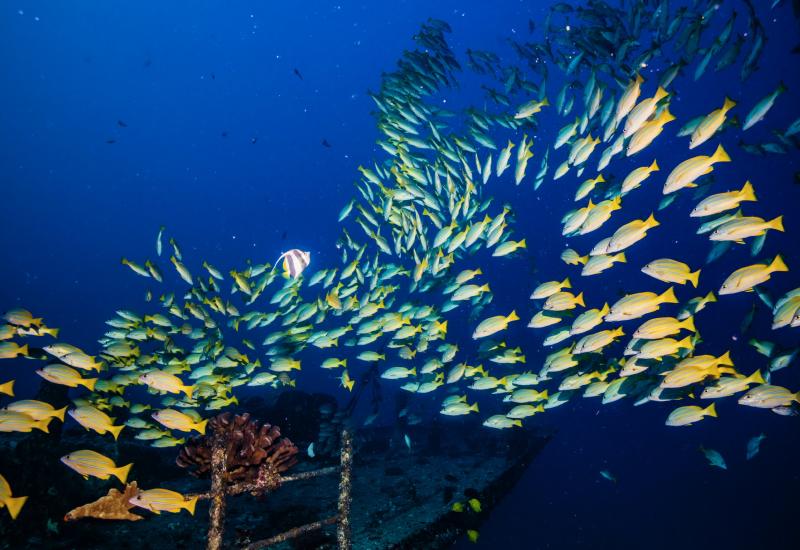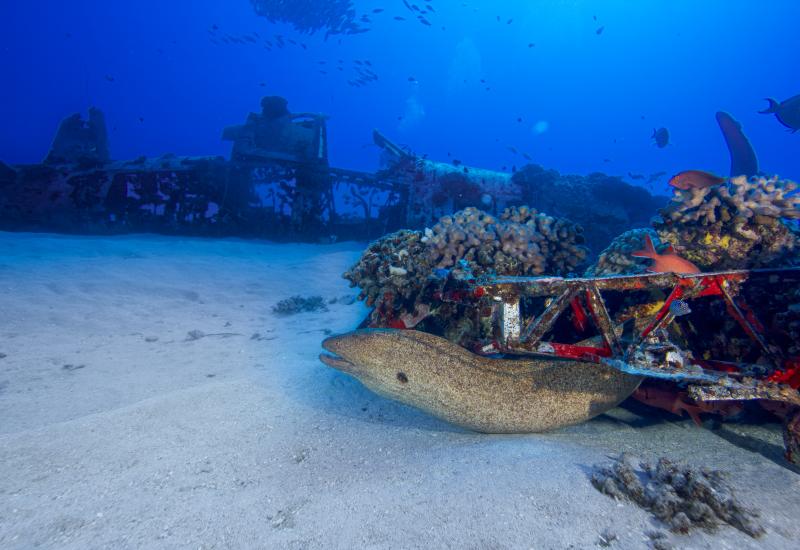Raja Ampats, Indonesia

Waigeo's rock islands and azure seas rival any tropical destination for drop-dead topside beauty.
March 2004
Text and Photography by Burt Jones and Maurine Shimlock

A juvenile pinnate batfish. A small slice of the Pacific Ocean in Indonesia is widely regarded as the center of marine biodiversity, with more species than any other spot in the world's oceans. And in this area, the Raja Ampat Islands are considered the "heart of the heart of marine biodiversity."
The Raja Ampat Islands are scattered over the transparent seas of Indonesia's Bird's Head Peninsula in western Papua Province. The name means "Four Kings" and pays homage to the four major islands, Misool, Salawati, Batanta and Waigeo, whose reefs have marine biologists from Australia to New York dropping their jaws in awe. All previous fish and coral counts have been obliterated by the number of species recorded in the Raja Ampats. On one remarkable day, scientists observed more than 280 fish species during a single dive.

The reefs around Salawati are riddled with underwater grottoes, perfect hiding places for small schools of fish and encrusting invertebrates. The buzz is just beginning to circulate about the Raja Ampats' premier sites, including Kai, where the reef straddles the equator. Begin the dive on the northern side and drift under water into the Southern Hemisphere.Divers embark for the Raja Ampat Islands from Sorong, about three hours by plane from Bali. A lively market town on mainland Papua, Sorong is a cultural melting pot of native Papuan Melanesians, Asians of various nationalities, and lost generations of traders from the Middle East and Africa. Most of the area's live-aboard dive boats stock up in Sorong with a week's supply of local fruits and vegetables, then head north and west toward Waigeo, where islands sprout from the sea like green Hershey's Kisses. Dive dinghies twist and turn through a maze of palm-studded rocks and hidden coves that shelter a variety of seascapes ranging from soft-coral-covered walls to muck bottoms inhabited by bizarre creatures. After diving, you can explore Waigeo's virgin beaches or hike a narrow, nearly vertical trail to the top of the island's limestone cliffs, home to flocks of sulphur-crested cockatoos and rainbow-colored parrots.

Normally a bottom-dweller, a painted scorpionfish nestles in a barrel sponge on one of Misool's vibrantly colored drop-offs.
The invertebrate life found off the Raja Ampats is so rich that you might find two different species of nudibranchs feasting on a single tunicate. Isolated from the mainland, marine and terrestrial species around the Raja Ampat Islands have adapted to life within their specific microenvironments. One reason this area is so rich is its east-west position relative to the prevailing north-south oceanic currents. The islands form a barrier that sweeps many animals from giant manta rays to inch-long mantis shrimp into a sort of underwater transit lounge. They flourish here, then reproduce and send their minute offspring into the currents to drift south through the Banda Sea.

You can experience verdant Batanta and its neighboring islands from a choice of world-class live-aboards or a remote shore-based diving camp that shares its pristine setting with several native villages. In this area of the Raja Ampats, lush reefs studded with yard-long giant clams begin just below the surface and extend well past 100 feet. The fish life is most abundant at shallow depths, including several varieties of rarely seen juvenile fish that take refuge around Cape Kri. At certain times of the year, multiple species spawn, and a thick, shimmering blanket of silversides and baitfish cover the reef. Exploring these awesome sites during the spawning season is like plunging off the edge of the known world, and perhaps that's why the Raja Ampat Islands are being touted as tropical diving's final frontier. A trip here could be your best opportunity to get up close and personal with a place the rest of the world hardly knows.

An osprey warily eyes local fishing canoes and waits for its chance to hunt in the lagoon.
Travel Guide
Sorong market. Dive Conditions and Climate > The best season for diving the Raja Ampats is November through March when water temps are in the high 70s to low 80s. The air is always warm and humid as you are within one to two degrees of the equator.
Getting There > From the U.S., most people fly to Bali, but you can also transit through Jakarta. Sorong is about a three-hour flight from either airport. There are several ways to connect through local carriers. Live-aboards > Kararu Dive Voyages, www.kararu.com; Grand Komodo Tours, www.komodoalordive.com; MV Pindito, www.pindito.com.
Land-based Dive Operator > Papua Diving, www.iriandiving.com.











